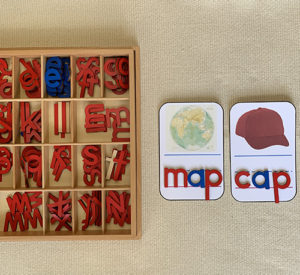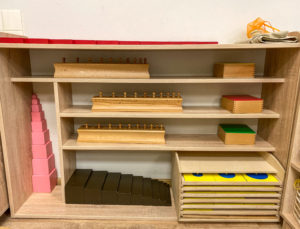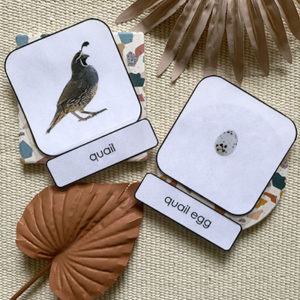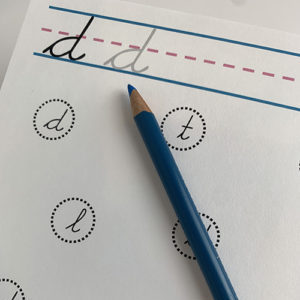The TL;DR Version
In the print vs cursive debate, should you teach your child cursive (if your school doesn’t)?
Yes, cursive can be much simpler as every lowercase letter starts the same way. Cursive looks beautiful and can be faster as a form of writing.
No, if you don’t feel like it, you will not harm your child. Both cursive and print handwriting provide the SAME benefits which all children need – which is putting a writing implement on paper – not tracing or typing. Some children with learning differences may benefit from learning cursive, but that is a question only a professional working with your child can answer.
My professional opinion
From my personal experience, “nowadays” teaching a child to print is easier because print is now the norm in most U.S. schools. As a teacher of 3-6 year olds, unless a parent expresses a strong desire for the child to learn cursive – which I am more than happy to support – I teach print. I know most of the children who attend my school and who I tutor privately will enter first grade with solid print writing skills.
I have mixed feelings about print vs cursive. While I learned cursive at a young age, my own children did not, and I have a minor regret about this. However, while we homeschooled during COVID, my older children taught themselves how to write in cursive, which only took a few days! So I wonder if the effort in the early years is worth it? That said, while they can now sign legal documents, I wonder if they will gravitate towards cursive, develop their own print/cursive hybrid like I did, or be able to read cursive with ease. As of now, several months after learning, I don’t see them using it.
What I tell parents about the benefits of cursive
Truthfully, when parents ask me “Should I teach my child print or cursive?” I don’t feel comfortable giving a definite answer. I tell them the research is mixed, it’s a personal choice based on tradition, culture, and preference. Furthermore, I only recommend cursive if they are prepared to invest time at home to do so, because unless it is part of their school’s curriculum, it will not be supported, and in some cases actively discouraged in school.
My reasons for wanting to teach children cursive are less evidence-based than they are nostalgic and preferred. Nostalgic because I learned to write cursive as a child and I remember how special I felt because I knew most other children weren’t learning it. Preferred because I just like the way it looks and I think kids, like I did, feel special when they know this beautiful way to write.
Now – this special feeling may be worth something – again this is not at all scientific, but if a child enjoys a skill like cursive, and feels like it makes them special, we should try to nurture that skill like we would any other special interest. Therefore I do think early exposure to cursive can be a benefit, insofar as it might attract a child to language learning in general, even if it does not convey extra advantage specifically.
What does the research say?
Some Montessori educators with whom I have spoken posit that cursive is easier because:
1. Each lowercase letter has the same starting point.
2. Children naturally tend to make loops when they first put a writing implement to paper. Therefore, cursive mimics a motion they are innately practicing.
3. Cursive may be better for fine motor development and control as the pencil should never leave the paper, which lends itself to smoothness and more control as opposed to choppy lines of print.
4. Cursive letters within a word are all connected, so words have a visually distinct beginning and end. So it may be easier to read than print if letter spacing is inaccurate.
5. Children who can read cursive can usually transition to reading print without any difficulty, but the opposite is not true of print to cursive. (I have found this to be true in my own teaching.)
When we look at some of the research on the potential benefits of print vs cursive, it largely states there is no benefit to learning cursive, with the exception possibly for students with learning differences. But even then the data is mixed.
There may be a benefit for children with dyslexia, “Some children who have trouble printing letters do benefit from learning cursive because they do not have to take their pencil off of the paper as much,” says [Karen Harmin] James. But, she adds, “these children are the exception, and the results cannot be generalized to all children learning to write.”
Ball, P. “Cursive Handwriting and Other Education Myths“. Nautilus.us. September 8, 2016.
So while research shows that while neither print nor cursive seems to offer an academic advantage, research does show that the act of freehand writing on paper is more beneficial than typing or tracing forms alone.
“The researchers found that a “reading circuit” fired up only in the children who drew the letter or shape freehand—not the children who typed or traced it.”
Dickinson, K. “Is cursive handwriting important to child development?” bigthink.com. January 21, 2019.
Wait, what does that mean about all the tracing we do in Montessori?
It is worth noting that in the above study, the children were instructed to trace a form on a dotted line. This is not the approach in Montessori, so it is worth reviewing the differences.
In the Montessori language curriculum, while we begin with tracing sandpaper letters, there are several design elements that differ from tracing a dotted line. The surface texture provides tactile feedback when tracing with two fingers, and is therefore self-correcting. (The child will feel with their fingers if they are off the correct path.) Tracing with two fingers is a pre-writing skill to prepare for using those fingers in the pincer grasp.
Additionally, because all lessons with the sandpaper lessons are presented individually, we tailor the lesson to their level, can demonstrate slowly, monitor any errors and make notes of what a child needs to have presented at another time. Perhaps most critically, we ensure the child is saying the sound after or during tracing. This is why sandpaper letter lessons are very different from typical tracing worksheets which are common in many schools. Therefore I am not surprised that tracing dotted lines does not confer the same benefits as attempting to write a letter freehand. I’d love to see this study replicated with sandpaper letters!
We also move from sandpaper letters to freehand pre-writing skills such as tracing the sandpaper letter and then immediately tracing the shape into sand with a finger, or tracing with crayons or pencils in the rainbow letter outlines.
What should I think about before I choose print or cursive writing?
I do have questions for you to answer for yourself to determine if print or cursive is a better choice for you:
- Does my child have any learning differences (visually or cognitively) making print or cursive being a better choice? Check with a professional (pediatrician, OT, etc.) about this topic.
- If cursive is not being taught in my child’s school, can I realistically I spend a few 15 minute sessions per week to practice? (I suggest you do not simply provide worksheets and rote work to do – make cursive writing special and fun!)
- If my child prefers cursive, how will my child handle being told they are not allowed to writing in cursive? Am I willing to work with teachers to ensure my child is supported in their goals and preferences?
At the end of the day, I think cursive is beautiful. If I had my way I would teach children to write in cursive from the start, as they will naturally absorb print handwriting and have an easy time picking it up in the future. Unlike print, there really is no way to effortlessly learn cursive, it is a skill that must be deliberately chosen. But for those of you who choose not to teach cursive, I hope you can relax and realize that the most important skill is getting pencil to paper, no matter the writing style.
I have a lot of cursive resources available in my shop for anyone who is interested in getting started – and many adults find they need a refresher for their own handwriting before they teach their children.
Fun Cursive Writing Worksheets








One Response